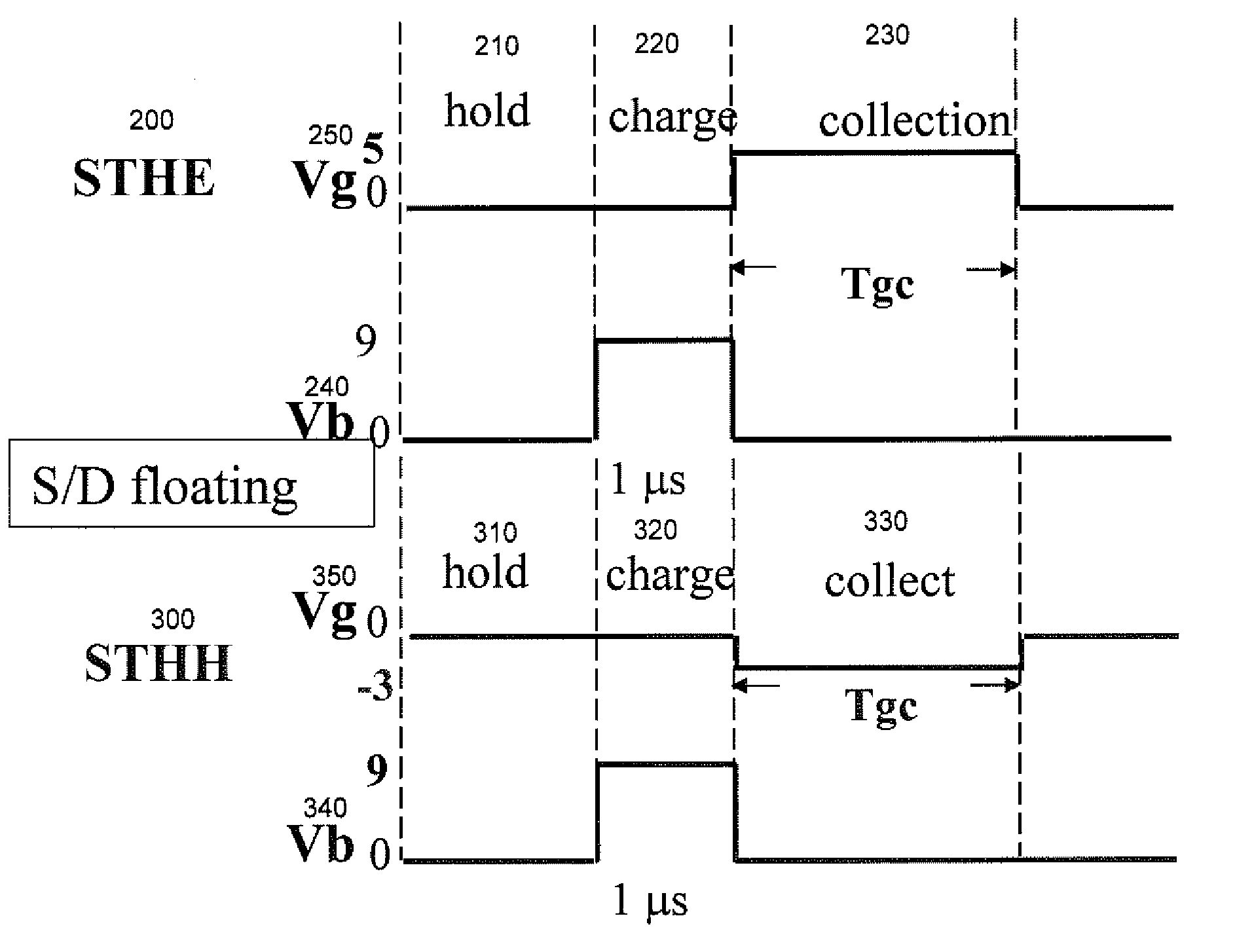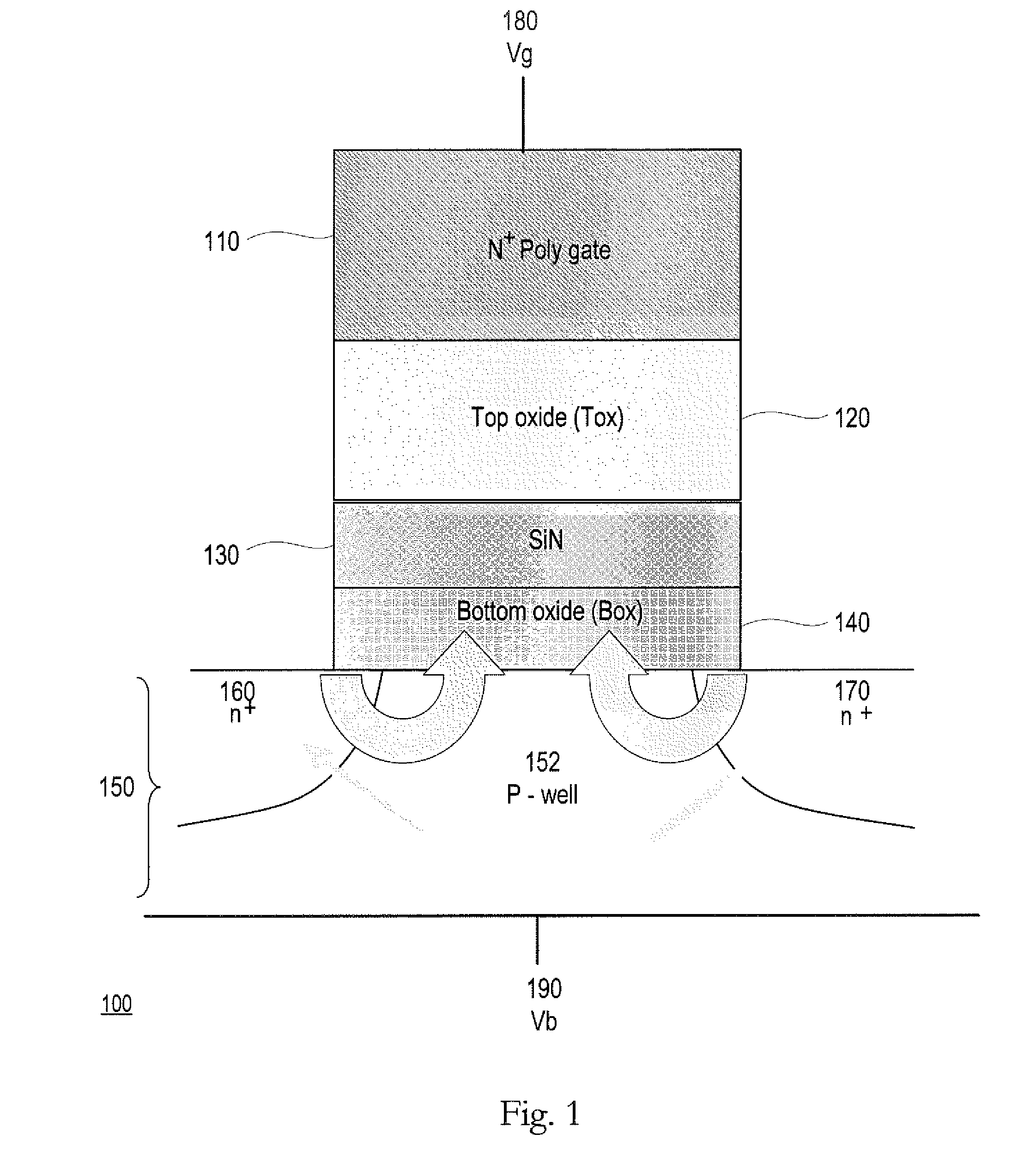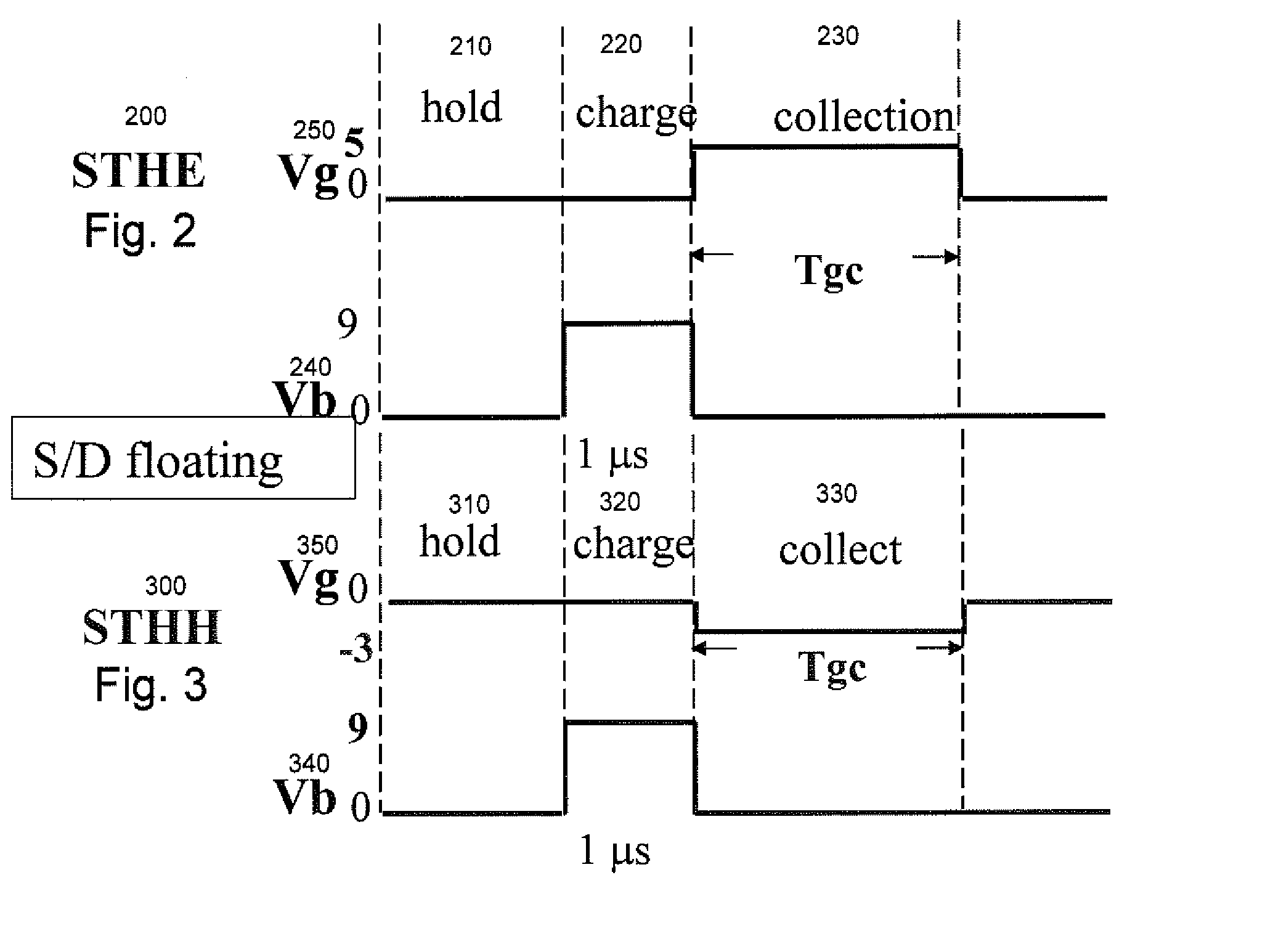Program and erase methods with substrate transient hot carrier injections in a non-volatile memory
a non-volatile memory and hot carrier technology, applied in static storage, digital storage, instruments, etc., can solve the problems of large vt distribution of erase state, difficult to erase, and low threshold cell charge loss, etc., to achieve uniform channel program and erase characteristics, short operation time, and low operation bias voltage
- Summary
- Abstract
- Description
- Claims
- Application Information
AI Technical Summary
Benefits of technology
Problems solved by technology
Method used
Image
Examples
Embodiment Construction
[0032]Referring now to FIG. 1, there is shown a simplified structural diagram illustrating a charge trapping memory cell 100 for carrying out a substrate transient hot carrier injection in a SONOS cell. The charge trapping memory cell 100 has a substrate 150 with n+ doped regions 160 and 170, and a p-doped region 152 between the n+ doped regions 160 and 170. A bottom dielectric structure 140 (bottom oxide) overlays the substrate 150; a charge trapping structure 130 (e.g. silicon nitride layer) overlays the bottom dielectric structure 140; a top dielectric structure (top oxide) 120 overlays the charge trapping structure 130; and an n+ poly gate 110 overlays the top dielectric structure 120. A gate voltage 180, Vg, is applied to the n+ poly gate 110, and a body voltage 190, Vb, is applied to the P-well substrate 150. Representative top dielectrics include silicon dioxide and silicon oxynitride having a thickness of about 5 to 10 nanometers, or other similar high dielectric constant ma...
PUM
 Login to View More
Login to View More Abstract
Description
Claims
Application Information
 Login to View More
Login to View More - R&D
- Intellectual Property
- Life Sciences
- Materials
- Tech Scout
- Unparalleled Data Quality
- Higher Quality Content
- 60% Fewer Hallucinations
Browse by: Latest US Patents, China's latest patents, Technical Efficacy Thesaurus, Application Domain, Technology Topic, Popular Technical Reports.
© 2025 PatSnap. All rights reserved.Legal|Privacy policy|Modern Slavery Act Transparency Statement|Sitemap|About US| Contact US: help@patsnap.com



